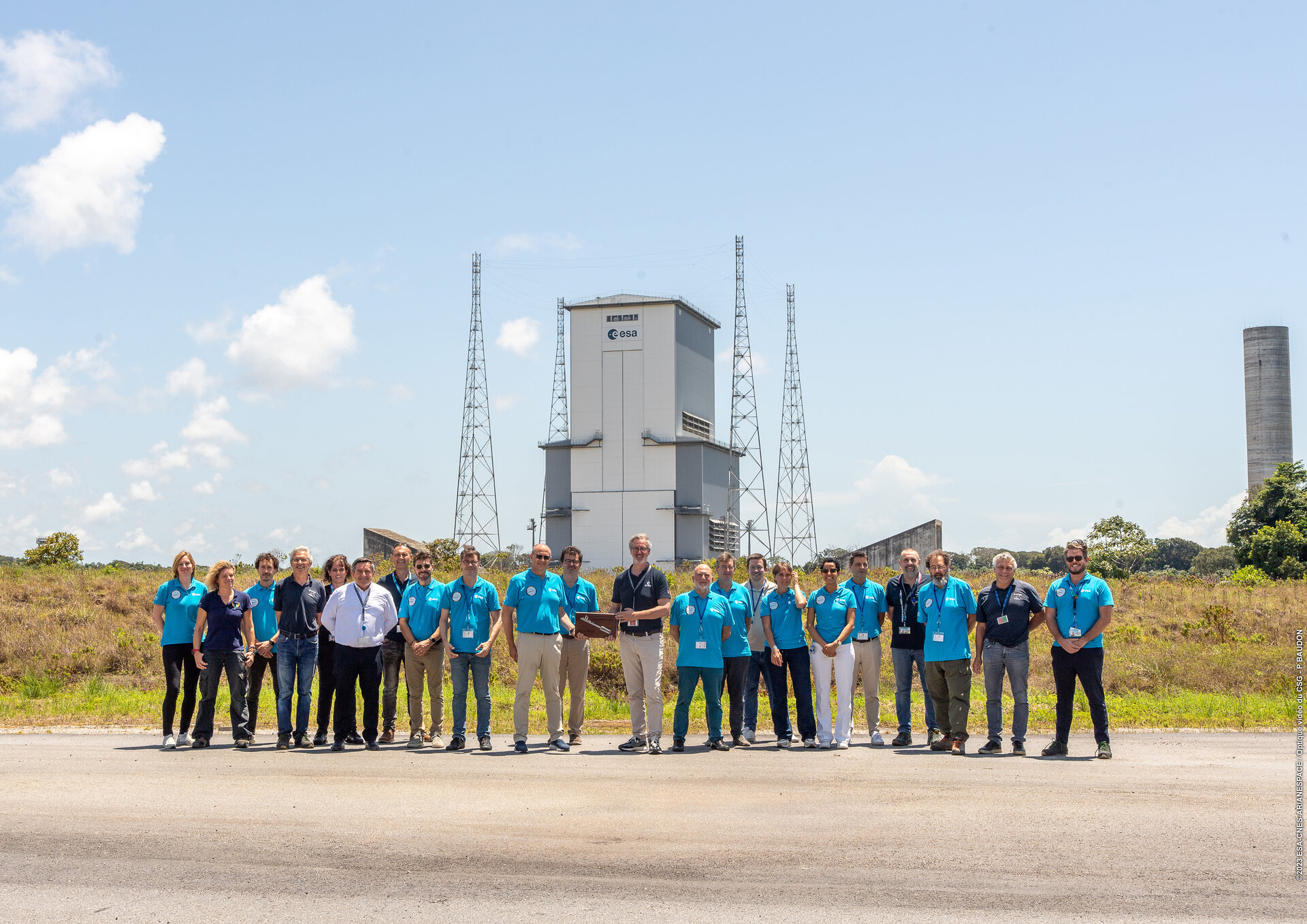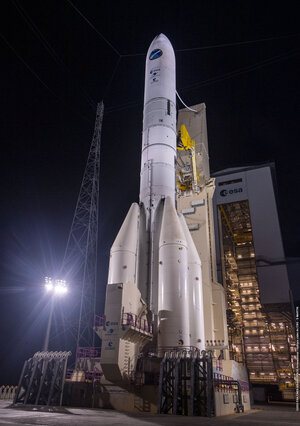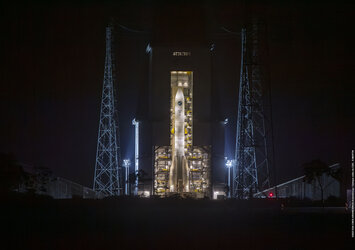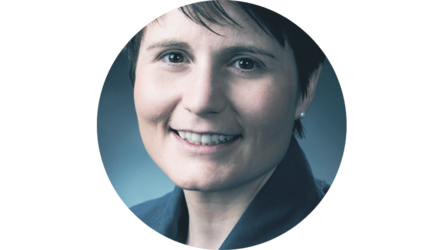Accept all cookies Accept only essential cookies See our Cookie Notice

About ESA
The European Space Agency (ESA) is Europe’s gateway to space. Its mission is to shape the development of Europe’s space capability and ensure that investment in space continues to deliver benefits to the citizens of Europe and the world.
Highlights
ESA - United space in Europe
This is ESA ESA facts Member States & Cooperating States Funding Director General Top management For Member State Delegations European vision European Space Policy ESA & EU Space Councils Responsibility & Sustainability Annual Report Calendar of meetings Corporate newsEstablishments & sites
ESA Headquarters ESA ESTEC ESA ESOC ESA ESRIN ESA EAC ESA ESAC Europe's Spaceport ESA ESEC ESA ECSAT Brussels Office Washington OfficeWorking with ESA
Business with ESA ESA Commercialisation Gateway Law at ESA Careers Cyber resilience at ESA IT at ESA Newsroom Partnerships Merchandising Licence Education Open Space Innovation Platform Integrity and Reporting Administrative Tribunal Health and SafetyMore about ESA
History ESA Historical Archives Exhibitions Publications Art & Culture ESA Merchandise Kids Diversity ESA Brand Centre ESA ChampionsLatest
Space in Member States
Find out more about space activities in our 23 Member States, and understand how ESA works together with their national agencies, institutions and organisations.
Science & Exploration
Exploring our Solar System and unlocking the secrets of the Universe
Go to topicAstronauts
Missions
Juice Euclid Webb Solar Orbiter BepiColombo Gaia ExoMars Cheops Exoplanet missions More missionsActivities
International Space Station Orion service module Gateway Concordia Caves & Pangaea BenefitsLatest
Space Safety
Protecting life and infrastructure on Earth and in orbit
Go to topicAsteroids
Asteroids and Planetary Defence Asteroid danger explained Flyeye telescope: asteroid detection Hera mission: asteroid deflection Near-Earth Object Coordination CentreSpace junk
About space debris Space debris by the numbers Space Environment Report In space refuelling, refurbishing and removingSafety from space
Clean Space ecodesign Zero Debris Technologies Space for Earth Supporting Sustainable DevelopmentLatest
Applications
Using space to benefit citizens and meet future challenges on Earth
Go to topicObserving the Earth
Observing the Earth Future EO Copernicus Meteorology Space for our climate Satellite missionsCommercialisation
ESA Commercialisation Gateway Open Space Innovation Platform Business Incubation ESA Space SolutionsLatest
Enabling & Support
Making space accessible and developing the technologies for the future
Go to topicBuilding missions
Space Engineering and Technology Test centre Laboratories Concurrent Design Facility Preparing for the future Shaping the Future Discovery and Preparation Advanced Concepts TeamSpace transportation
Space Transportation Ariane Vega Space Rider Future space transportation Boost! Europe's Spaceport Launches from Europe's Spaceport from 2012Latest

Handing over the keys to the Ariane 6 launch pad
Thank you for liking
You have already liked this page, you can only like it once!
France’s space agency CNES handed over the keys to the Ariane 6 launch complex in July 2023, with ESA representatives handing them straight back to CNES in a symbolic event to commemorate the launchpad being ready for its test campaign and then launch.
The launchpad for Ariane 6 was built to specifications in Kourou, French Guiana, to accommodate all the infrastructure needed to control and launch Europe’s next generation rocket. Called ELA4 it is the fourth launchpad for the Ariane series of rockets and a new project extending over 1.5 square kilometres, requiring over 35 000 cubic metres of cement to build.
Over four days ESA and CNES personnel inspected, verified and reviewed the facilities. This included the final assembly building where the Ariane 6’s core and upper stages will be connected, hundreds of metres of underground tunnels that provide fuel and data lines, flame trenches and rooms with computers for launch monitoring.
The mobile gantry houses Ariane 6 in the last steps before launch. The 90-m tall structure was included in the review as part of the ground infrastructure. It protects the rocket from the elements and allows for payloads to be installed before the whole structure rolls away on rails to allow Ariane 6 to launch into the sky.
The cold storage of fuel, several hundred metres from the launchpad and the incredibly complex system of pipes used to provide water and fuel were inspected, as well as the water treatment facility that recuperates water used to suppress noise and vibrations on launch for reuse for the next liftoff.
-
CREDIT
ESA -
LICENCE
ESA Standard Licence

Completing Ariane 6 propulsion elements on the launchpad

Ariane 6 on the launchpad for nighttime rehearsal

Ariane 6 in the spotlights

Ariane 6 control room during hot-fire test















 Germany
Germany
 Austria
Austria
 Belgium
Belgium
 Denmark
Denmark
 Spain
Spain
 Estonia
Estonia
 Finland
Finland
 France
France
 Greece
Greece
 Hungary
Hungary
 Ireland
Ireland
 Italy
Italy
 Luxembourg
Luxembourg
 Norway
Norway
 The Netherlands
The Netherlands
 Poland
Poland
 Portugal
Portugal
 Czechia
Czechia
 Romania
Romania
 United Kingdom
United Kingdom
 Slovenia
Slovenia
 Sweden
Sweden
 Switzerland
Switzerland

























